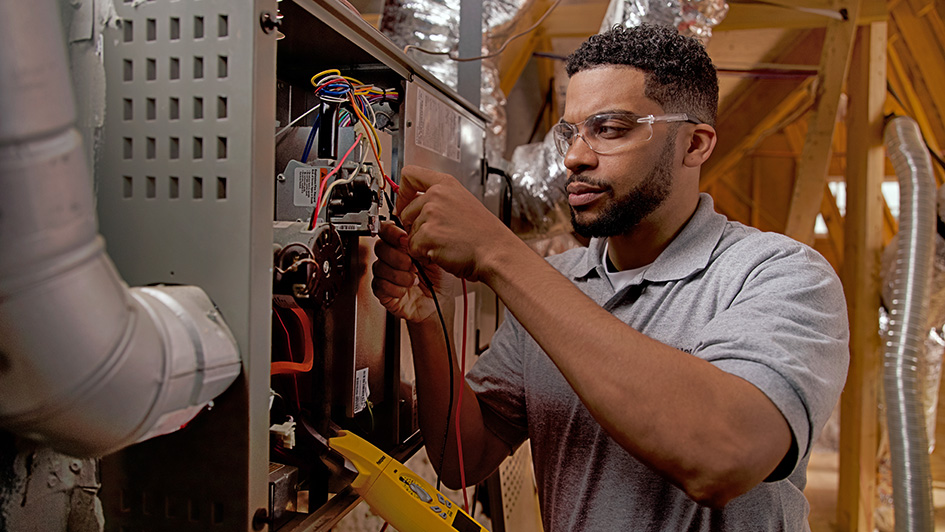
A furnace is usually a background player at home, keeping you warm across the cold winter months. It regularly doesn’t get noticed until a malfunction appears.
One root cause could be that your furnace has a cracked heat exchanger. It’s a potentially dangerous issue, so it’s important to familiarize yourself with the symptoms of a cracked heat exchanger and what you should do if you believe that might be the problem.
What Is a Heat Exchanger in a Furnace?
A heat exchanger transfers heat from the combustion chamber inside your furnace to the air that circulates through the ventilation. It generally handles this through coils or tubes that heat up the air while functioning as a barrier to keep byproducts formed in the combustion chamber, called flue gasses, from getting out into your home.
Is a Cracked Heat Exchanger Dangerous?
Given its important role, it shouldn't come as a surprise that a damaged heat exchanger can be hazardous. A crack in the heat exchanger can enable dangerous gasses – including carbon monoxide, which can be lethal – to be distributed throughout your home.
For obvious reasons, never turn on your heater if you suspect it has a cracked heat exchanger, as this could make the whole family ill. Reach out to an HVAC professional immediately if you believe your heater has a cracked heat exchanger that should be repaired.
Four Symptoms of a Cracked Heat Exchanger:
- Furnace switches off: A crack in your heat exchanger may cause your furnace to switch off.
- Unusual Smells: If the air coming out of your furnace has an intense chemical smell, it could be an indicator that gasses are seeping through cracks in your heat exchanger. These byproducts, which may smell like formaldehyde, are a significant warning sign.
- Carbon monoxide alarm is triggered or you notice poisoning symptoms: If a cracked heat exchanger is relieving carbon monoxide in your home, your carbon monoxide alarm should go off or family members could struggle with signs of carbon monoxide poisoning. Symptoms include headaches, dizziness, weakness, nausea, vomiting or feeling tired. If the alarm goes off or you feel unusually tired, get out of the home right away and then call for help.
- Soot: If you see black sooty buildup on the exterior of your furnace, it’s another sign something could be seriously wrong.
What You Can Do if the Furnace Heat Exchanger is Cracked
If you believe your furnace has a cracked heat exchanger, call a professional well versed in furnace installation The Bay Area right away so they can take a look at your system and, if required, start a furnace heat exchanger replacement. Costs will differ depending on the situation, but estimates run in the neighborhood of $1,000 to $3,000.
However, the good news is that heat exchangers are often protected by the warranty. You should check the warranty paperwork on your furnace, because while the warranty may not cover the entire cost of repairs, it can significantly lower your bill.
How to Avoid a Cracked Heat Exchanger in Your Home
One of the best ways to prevent a problem in your furnace overall is through consistent furnace maintenance. Furnaces provide the best possible return on investment when they run efficiently. Calling a certified professional to examine your furnace for broken-down parts, dirty filters and other potential problems can help you avoid getting a big bill later on.
It’s also beneficial to take a look at your furnace filters every few months – it’s ideal some filters be swapped out every 90 days or sooner if they are dirty or grimy. While the filters aren't connected to the heat exchanger itself, the strain of dragging air through a clogged filter makes the entire furnace work longer to complete its job. And the harder your furnace works, the more strain components like the heat exchanger will experience.

